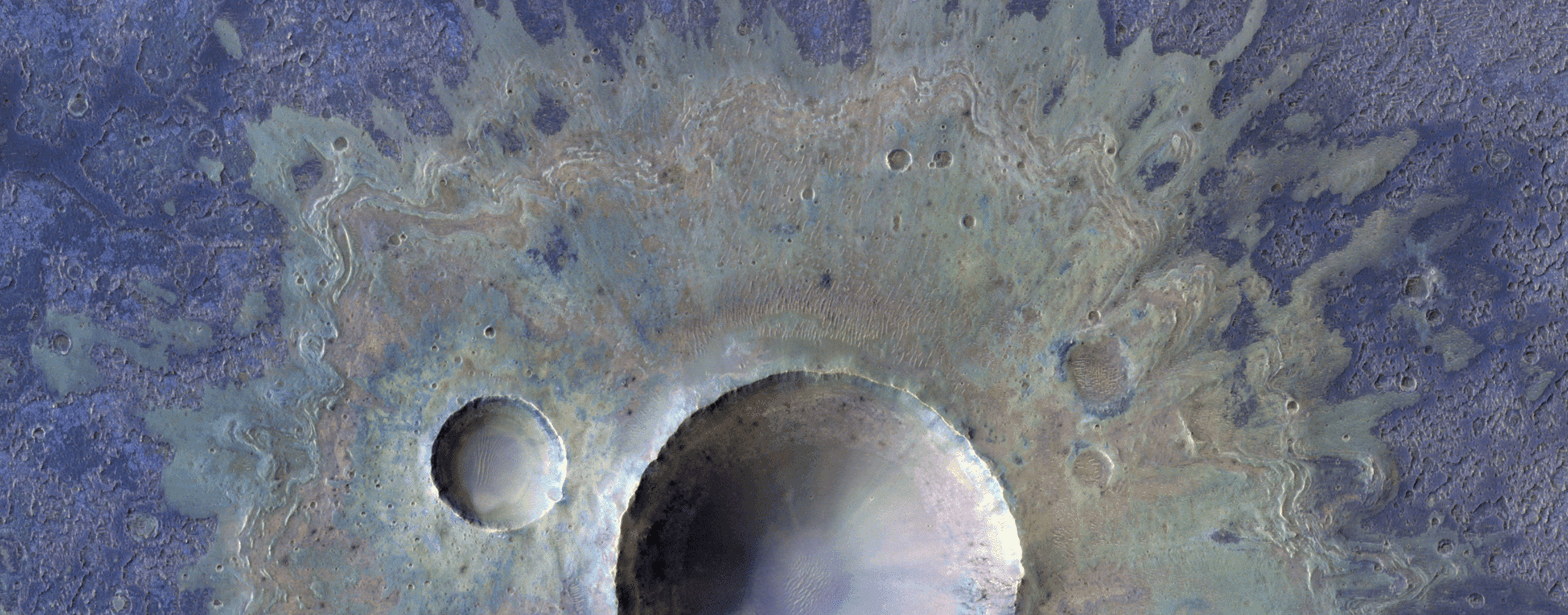Freshly released images show a bird’s eye view of the colossal craters that scar the surface of Mars. Not only do they make for a pretty sight, but the images provide clues about whether life has ever lived on our closest planetary neighbor.
The images were captured by the Trace Gas Orbiter of ExoMars, an astrobiology program of the European Space Agency (ESA) and the Russian space agency (Roscosmos).
The first image (above) shows a crater in Utopia Planitia, the largest confirmed impact basin in the Solar System with a diameter of roughly 3,300 kilometers (2,050 miles) – that’s around the distance from Las Vegas to Washington DC.
Taken from about 400 kilometers (248 miles) above the surface, the image suggests the crater was formed by an asteroid collision at a time when this region was home to water ice. The smooth shape of the crater is further evidence that the region once held water ice.
Splat! An interesting bunch of craters in Ganges Chasma, Mars.
Image credit: ESA/TGO/CaSSIS
On Earth, the presence of water is a good indication there is life present. While it’s not yet certain this “rule” applies to other planets, evidence of Martian water raises the possibility that the Red Planet once harbored life.
The second image (above) shows a scattering of craters near the equator of Mars in a deep canyon known as the Ganges Chasma.
Be aware that this is a false color image – the Red Planet hasn’t suddenly started feeling blue. The color filters were added so scientists can highlight mineralogical or geologic differences on Mars’s surface that are hard to distinguish with the naked eye.
The two larger craters measure 4 kilometers (2.4 miles) and 1.2 kilometers (0.7 miles) in diameter. Once again, the splatter shape of the large crater suggests that the surface was not completely dry at the time of impact.
This giant crater is an ancient one.
Image credit: ESA/TGO/CaSSIS
Lastly, ESA unveiled a final image (above) of an ancient crater in the southern highlands of Mars. Located in the Tyrrhena Terra region, the 15-kilometer (9.3-mile) wide crater is relatively old.
Unlike younger craters that have a sharp and defined rim, this giant crater has been battered by millennia of erosion and has since been filled with sediment. Smaller craters dotted within the larger cater also indicate this feature has been here for a very, very long time.
What it lacks in life, Mars makes up for in geology. The Red Planet may only be around half the size of planet Earth, but it’s home to some truly massive geological features, including some of the largest known impact craters. Mars is also home to volcanoes that are far larger than those on Earth, including some of the largest known volcanoes in the Solar System.
Source Link: Gaze Into The Colossal Craters Of Mars And They Will Stare Icily Back
